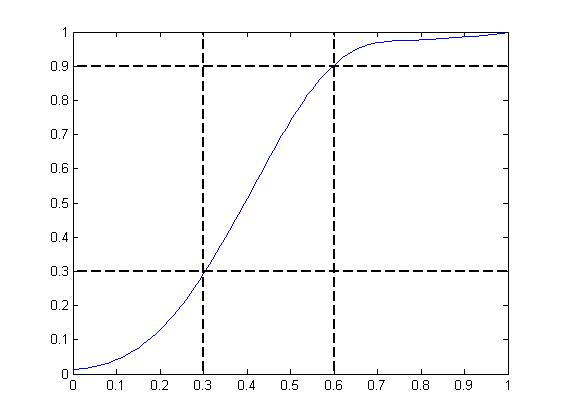I'm trying to design the frequency response function for a low-pass filter. I need the function to be polynomial and to fulfill the following constraints: the coefficients must sum to 1, the function must lie at the interval [0, 1] and its' value at 1 must be 1.
Inspired by this StackExchange answer, I've tried to solve this problem using an SDP solver. The only non-trivial constraints for the program are the bounds for the polynomial. I implemented them by requiring the polynomial to correspond to a quadratic form defined by a positive semidefinite matrix. Using the same method, I can require the polynomial to be monotonic by imposing a nonnegativity constraint on the polynomial's derivative.
Here is an example of a solution to the above:

Here, the polynomial is required to be monotonic and to pass at two control points which are at the intersections of the dashed-lines on the chart. The latter is supposed to model the transition region of the filter.
The problem is that the filter in the chart is very far from the ideal low-pass filter. This is because the SDP solver fails when I try to shrink the transition region. Another thing that happens when I do that is that the quadratic form's matrix condition number skyrockets. I suspect that these two things are related. Raising the polynomial's order doesn't help.
Any suggestions about how to solve this issue?